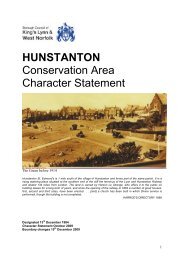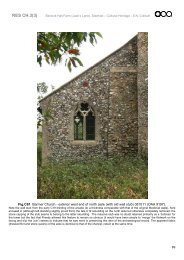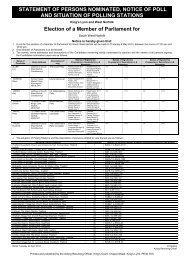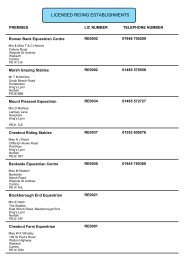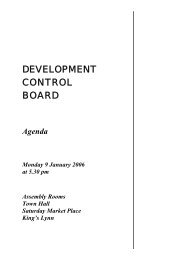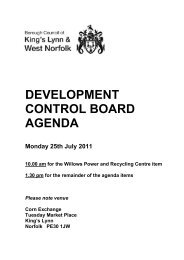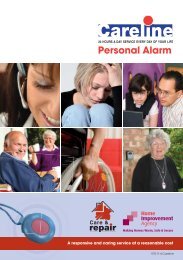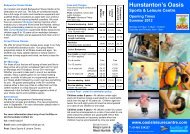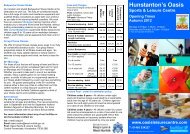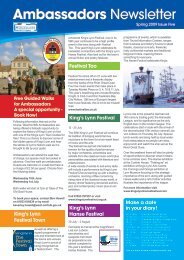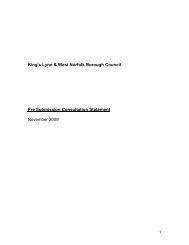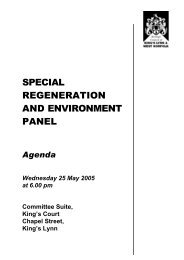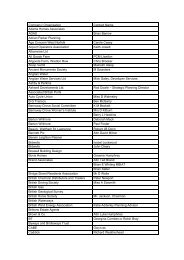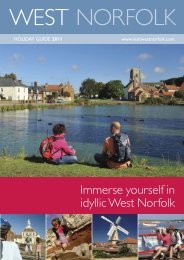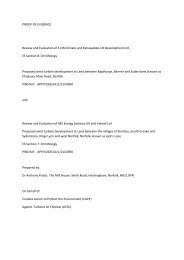KING'S LYNN AND WEST NORFOLK AREA MUSEUMS COMMITTEE
KING'S LYNN AND WEST NORFOLK AREA MUSEUMS COMMITTEE
KING'S LYNN AND WEST NORFOLK AREA MUSEUMS COMMITTEE
You also want an ePaper? Increase the reach of your titles
YUMPU automatically turns print PDFs into web optimized ePapers that Google loves.
2 Using collections<br />
The Core collections basically fall into three categories, with different levels of<br />
access:<br />
1. Display material represents the best or most significant items in the collections<br />
and is easily accessible by all people visiting the museums. Gallery displays are<br />
highly interpreted to attract the interest of the general visitor and, hopefully, enthuse<br />
them. The Egyptology collection at Norwich Castle "earns its keep" by providing an<br />
interesting display for the general visitor and an important resource for schools,<br />
which are able to study this part of the national curriculum from real objects in their<br />
local museum.<br />
2. Study collections provide depth for people who want to learn more about a<br />
specific subject. The emphasis is on presenting as many objects as possible for<br />
study. Improved study facilities are being provided at Collections Study Centres,<br />
such as the Shirehall, Carrow House or Gressenhall, where collections are available<br />
in reference galleries. Objects are either freely accessible when the museum is open,<br />
on open storage (easily accessible with an appointment or on regular open days) or<br />
in study rooms (open on set days a week).<br />
3. Long-term research material is needed as evidence for current or future<br />
research and only needs to be available on an appointment basis. This can be<br />
contained in high density storage, thereby making the most cost effective use of<br />
space. It is debatable how much of this material is needed but museums have a<br />
responsibility to future research to ensure that important evidence is not destroyed<br />
unnecessarily. New analysis techniques are being developed all the time and often<br />
unprepossessing samples from a Roman midden or pieces of fire-damaged stone<br />
can provide important information. "Seahenge" is a case in point. The timbers are<br />
over 4,000 years old and have been damaged by the action of the tides but English<br />
Heritage has been able to determine the year and month in which the trees were<br />
felled, and how many individual people worked on them. However, we can't keep<br />
everything and a balance needs to be struck between keeping enough for future<br />
needs but not so much that there are no resources to do anything else.<br />
Items not retained for the Core Collection are categorised as follows:<br />
4. Working or demonstration material<br />
Objects are put to working use or demonstration use at or on behalf of the museum.<br />
Items may require sufficient restoration to satisfy for example health and safety<br />
requirements, functionality, and should take account of presentation issues of object<br />
preservation/restoration within the museum environment. They should be used under<br />
defined conditions that are stated in their documentation.<br />
5. Education, handling and loan collection<br />
Objects are included for educational reference material only, including loans. There is<br />
an implied deterioration through usage over time.<br />
2



